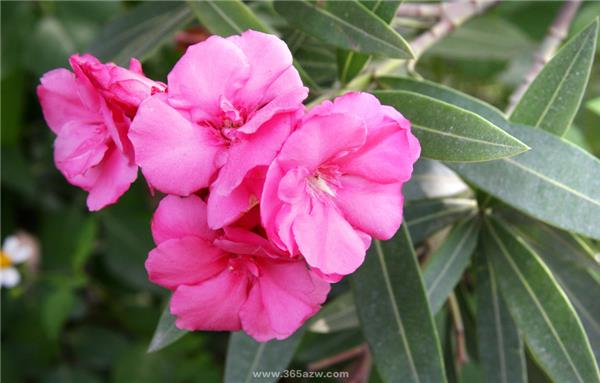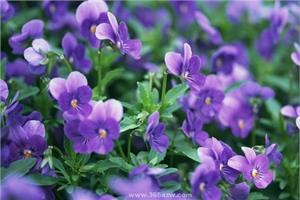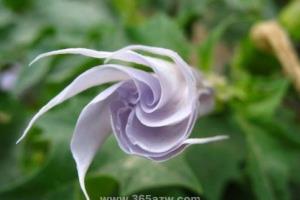Cultivation techniques of oleander

Cultivation techniques
Reproduction method
The cuttings are mainly propagated, and they can also be divided and striped. It can be inserted in both spring and summer. Soak the base of cuttings in clean water for about 10 days, keep them fresh, take root ahead of time after insertion, and the survival rate is also high.
The specific method is that the 1-to 2-year-old branches cut in spring are cut into 15-20-meter stem segments, 20 or so are tied into a bundle, soaked in clean water, and the water depth is 3 times that of the stem segment. The water at the same temperature is changed every 1-2 days, and the temperature is controlled at 20-25 ℃. Adventitious roots can be inserted when adventitious roots are found in the immersed part. When inserting, you should make holes with bamboo chopsticks in the soil so as not to damage the adventitious roots. Because of the strong ability of sprouting at the base of the old stem of oleander, a large number of twigs are often produced, which can be fully used for cuttings in summer. Select semi-Lignification degree cuttings, retain the top 3 leaflets, insert in the matrix, pay attention to timely shading and water management, the survival rate is also very high. When pressing and reproducing, first cut the buried part or cut it in the ring, bury it in the soil, cut off the mother in about 2 months, and transplant it with soil in the coming year.
Selection and treatment of seedbed
Nursery bed try to choose leeward to the sun, no stagnant water, soil diseases, insects, weeds, sufficient fertility, easy to manage plots as seedbeds. Generally speaking, the nursery bed should be in the east-west direction, and the ground must be carefully prepared no matter which way is used to raise seedlings. In general, the depth of cultivated land should reach 25Mui 30 meters, the bed width should be 1 meter, the length is suitable, and the trail width should be 50 meters. When the soil is sticky and heavy, it can be mixed with sand properly and pay attention to soil disinfection.
Selection and treatment of cuttings
1. Panicle selection
As a mother plant, it should have the conditions of good quality, robust growth, free of diseases and insect pests and so on. On the same plant, the cuttings generally choose the sunny branches in the middle and upper part of the year, and the internodes are short, the branches and leaves are stout, and the buds are full. On the same branch, the middle and lower branches are generally selected for hard branch insertion, the cut mouth should be smooth, the upper end should be cut into a horizontal plane, and the lower end cut into a bevel. When cutting the branches, select the stout branches with a diameter of 1m / m and the cuttings length of 15m / 20m. The cuttings must have two or three buds, the upper cut is about 1.5 cm away from the buds, and the lower leaves are removed. When pruning branches, red and white varieties are separated.
2. Cuttings treatment
Separate the design and color of cuttings, so that they can be cut, cut and inserted along with the cuttings. In order to improve the survival rate of cuttings, dozens of cuttings were neatly bundled in bundles, soaked in ABT rooting powder No. 1 100ppm for 8 hours and rooting powder No. 6 30-100ppm for 8 hours. In general, 1 gram of rooting powder could treat 3000 cuttings.
3. Insertion mode and density
Soil disinfection should be carried out before planting, and the bed should be filled with enough water. The treated cuttings were inserted according to the row spacing of 5 × 5 × 5 meters. To pay attention to the stable upper and lower end of the cuttings, can not be inverted, it is necessary to make the cuttings cut close to the soil, and to prevent abrasion of the cuttings under the incision of the cortex. For this reason, iron bars are used to pierce the cuttings first, and then insert the cuttings, but the depth of the perforation is slightly shallower than the length of the cuttings, so that the cuttings can be inserted into the soil. Generally speaking, it is appropriate to expose one or two buds on the ground, and mark and record the cuttings after insertion.
4. Plug-in management
The temperature needed for most flower cuttings to take root is 20 ℃-25 ℃, and the relative humidity is 80% 85%. It usually takes root 20 days after insertion. Be sure to spray enough water after insertion so that the soil is in close contact with the cuttings. In order to prevent the temperature from getting too high at noon, it is best to take shade. According to the soil moisture condition, spray water once every morning and evening, but the amount of water sprayed should not be too much, otherwise it will affect the cuttings healing and rooting. In order to prevent the occurrence of germs, spray germicidal solution every 10 days or so. It was transplanted the following spring.
Cultivation and management
Oleander has strong adaptability, easy cultivation and management, and is relatively extensive no matter in the field or in the pot. In the place where the ground is planted, transplanting should be carried out in spring, and re-cutting should be carried out when transplanting. Pay attention to protection in winter. Branches and leaves are vulnerable to scale insects, so attention should be paid to prevention and control.
Potted oleander requires not only good drainage, but also sufficient fertility. Spring germination needs shaping and pruning, the overgrown branches and delicate branches in the plant can be cut off from the base, the dense branches in the inner chamber should also be sparsely cut, and at the same time, the wound and anti-corrosion film should be smeared on the pruning mouth to protect the wound, so that the branches can be evenly distributed and the tree shape can be kept plump. After 1 ~ 2 years, the basin was changed once, and the basin should be changed after pruning. Summer is the period of vigorous growth and flowering of oleander, which requires a lot of water. In addition to watering each day in the morning and evening, if the pot soil is too dry, one more spray should be added to prevent the twigs from wilting and affecting the flower life. After September, water should be deducted to inhibit the continued growth of the plant, make the branch tissue mature and increase the accumulation of nutrients in order to survive the winter safely. The overwintering temperature should be maintained at 8: 10 ℃. When the temperature is lower than 0 ℃, oleander leaves will fall. Oleander is a fertilizer-loving plant, which should be applied once a month during the growing period in addition to sufficient basal fertilizer.
Culture management
For the management of oleander, we must do a good job in three points:
It must be trimmed at the right time.
The top branch of oleander has the characteristic of one-third, which can be trimmed and shaped according to the need. If you need a trigeminal nine-top shape, you can cut off a part of it at the top of the tripod and you can divide it into nine. If you need nine top eighteen branches, you can leave six branches, cut off from the axils of the top leaves, and eighteen branches can be produced. The pruning time should be after each flowering. In the north, oleander florescence is from April to October. The blooming flowers should be got in time to ensure the concentration of nutrients. It is generally divided into four pruning times: first, after Grain Rain in spring; second, in July and August; third, in October, and fourth, in winter. If you want to blossom indoors, move it to the sunshine of about 15 ℃. Prune immediately after flowering, otherwise, the flowers are few and small, or even do not bloom. Through pruning, the branches are evenly distributed, the flowers are colourful and the tree shape is beautiful.
The roots must be soothed in time.
The capillary root of oleander grows faster. The three-year-old oleander, planted in a basin with a diameter of 20 centimeters, can grow full of roots before July of that year, forming a ball, hindering the infiltration of water and fertilizer and affecting growth. If the roots are not thinned in time, there will be withering, fallen leaves, death and so on. The best time for root thinning is from early August to late September. At this time, the root is dormant, which is a good opportunity to soothe the root. Sparse the report method: use a fast shovel to cut off the surrounding yellow hair root, and then use a three-pointed hook to sparse along the main root. About half or 1/3 of the yellow hairy roots are removed and replanted in the pot. After thinning the roots, pour water in the shade to keep the basin soil moist. Keep shade for about 14 days, then move to the sun. If oleander is planted in the ground, the yellow hairy root should also be cut around the main pole in mid-September. After cutting the roots, water them and apply thin liquid fertilizer.
It must be fertilized and watered at the right time.
Oleander is a flower that likes fertilizer and water, neutral or slightly acidic soil.
Fertilization: organic soil fertilizer, which accounts for about 20% of the basin soil, should be maintained. If it is used in chicken manure, 15% is enough. Fertilization time: one time before Qingming Festival and one time after the Autumn Equinox.
Methods: digging annular trenches at the edge of the basin, applying fertilizer and then covering the soil. After Qingming fertilization, bean cake water retted with water was applied every 10 days or so; after the Autumn Equinox applied fertilizer, bean cake water or peanut cake water, or ten times the amount of chicken manure, was applied every 10 days or so. Without the above fertilizer, you can add five to seven times the water in the urine of people who have been mature for more than seven days, pour it along the edge of the basin, and then pour water thoroughly. Fertilizer with more nitrogen, the principle is dilute, light, less, diligent, strictly prevent burning roots. Proper watering is the key to the management of oleander. Improper watering in winter and summer will cause fallen leaves, flowers, and even death. It is watered once a day in spring and once in the morning and evening in summer, so that the moisture of the basin soil can be kept at about 50%. The leaves should be sprayed with water frequently. If it is too dry, it is easy to lose leaves and wither. Watering can be reduced in winter, but the soil moisture in the basin should be kept at about 40%. The leaves should often be washed with clean water to wash the dust. If it blossoms in winter, it can keep the room temperature above 15 ℃; if it does not blossom in winter, the room temperature can be reduced to 7: 9 ℃, which can be placed in the room where there is no sunlight. Oleander planted outdoors in the north needs to be bandaged with herbs to prevent freezing and cold, and remove the cold protection before and after the Qingming Festival. Although oleander is easy to manage, it cannot be paralyzed.
Sparse the report method: use a fast shovel to cut off the surrounding yellow hair root, and then use a three-pointed hook to sparse along the main root. About half or 1/3 of the yellow hairy roots are removed and replanted in the pot. After thinning the roots, pour water in the shade to keep the basin soil moist. Keep shade for about 14 days, then move to the sun. If oleander is planted in the ground, the yellow hairy root should also be cut around the main pole in mid-September. After cutting the roots, water them and apply thin liquid fertilizer.
It must be fertilized and watered at the right time.
Oleander is a flower that likes fertilizer and water, neutral or slightly acidic soil.
Fertilization: organic soil fertilizer, which accounts for about 20% of the basin soil, should be maintained. If it is used in chicken manure, 15% is enough. Fertilization time: one time before Qingming Festival and one time after the Autumn Equinox.
Methods: digging annular trenches at the edge of the basin, applying fertilizer and then covering the soil. After Qingming fertilization, bean cake water retted with water was applied every 10 days or so; after the Autumn Equinox applied fertilizer, bean cake water or peanut cake water, or ten times the amount of chicken manure, was applied every 10 days or so. Without the above fertilizer, you can add five to seven times the water in the urine of people who have been mature for more than seven days, pour it along the edge of the basin, and then pour water thoroughly. Fertilizer with more nitrogen, the principle is dilute, light, less, diligent, strictly prevent burning roots. Proper watering is the key to the management of oleander. Improper watering in winter and summer will cause fallen leaves, flowers, and even death. It is watered once a day in spring and once in the morning and evening in summer, so that the moisture of the basin soil can be kept at about 50%. The leaves should be sprayed with water frequently. If it is too dry, it is easy to lose leaves and wither. Watering can be reduced in winter, but the soil moisture in the basin should be kept at about 40%. The leaves should often be washed with clean water to wash the dust. If it blossoms in winter, it can keep the room temperature above 15 ℃; if it does not blossom in winter, the room temperature can be reduced to 7: 9 ℃, which can be placed in the room where there is no sunlight. Oleander planted outdoors in the north needs to be bandaged with herbs to prevent freezing and cold, and remove the cold protection before and after the Qingming Festival. Although oleander is easy to manage, it cannot be paralyzed.
Related
- Wuhan Hospital Iron Tree Blooming Result Was Instantly Frightened by the Gardener Master
- Which variety of camellia is the most fragrant and best? Which one do you like best?
- What is the small blue coat, the breeding methods and matters needing attention of the succulent plant
- Dormancy time and maintenance management of succulent plants during dormancy
- Minas succulent how to raise, Minas succulent plant pictures
- What are the varieties of winter succulent plants
- How to raise succulent plants in twelve rolls? let's take a look at some experience of breeding twelve rolls.
- Attention should be paid to water control for succulent plants during dormant period (winter and summer)
- Watering experience of twelve rolls of succulent plants
- Techniques for fertilizing succulent plants. An article will let you know how to fertilize succulent plants.



